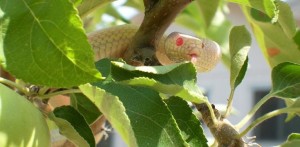
UGLY and void of friends, Queensland’s iconic cane toad is back with a vengeance this year, inviting itself into our backyards, swimming pools and pot plants.
The Fraser Coast has enjoyed a few years’ grace from large numbers of the toxic pest but recent warm, wet weather conditions have provided perfect breeding conditions.
Don Macdonald from Maryborough’s Bouganvillia Dell Nursery said this year’s summer wet season was also about to begin and if it was as wet as predicted, cane toads would reach mass proportions by January.
“You can hear them now on ponds and dams,” he said. “They have their own voice entirely.”
Cane toads call with a continuous warble, not unlike the sound of a small petrol engine running.
They produce a cocktail of highly toxic substances in their “warty” skin, which are secreted by two large glands behind the ears. The toads are harmless when left alone but their toxins are dangerous if rubbed into the skin or eyes or eaten by dogs.
Cane toads are also a threat to native wildlife, particularly animals that feed on frogs, and compete with native species for shelter and food.
However Mr Macdonald is not concerned about the pest’s latest invasion.
“It’s natural evolution – they build in numbers then disease takes on and knocks them back down again, keeping numbers under control.”
Queensland Parks and Wildlife Service senior conservation officer Harry Hines said cane toads were susceptible to a fungal disease – amphibian mucor – that usually hits at the end of long, dry winters.
“But we haven’t had a long, dry winter,” he said. “The cane toads are happily eating and have started breeding early this season.
“We’re seeing a lot of juveniles, less than five centimetres, kicking around, emerging from ponds and waterways.”
Queensland Museum curator of reptiles and amphibians
Patrick Couper said cane toads bred in large numbers but the vast majority didn’t reach maturity.
“It’s a harsh world out there for small cane toads.”
Mr Macdonald said predators such as crows and magpies had developed a method of killing them.
“They make incisions under their necks and pull the tongues out.”
He also said more myths existed than facts.
“People worry they will poison their goldfish in garden ponds but toads won’t poison their own environment. I don’t think they’re as much a pest as some weeds are.
“But if dogs have been playing with toads and start frothing at the mouth, take them to a vet straight away.”
The recommended method of disposing of cane toads is to place them in plastic bags and freeze them.
Mr Macdonald said people who could easily distinguish cane toad eggs from those of native frogs could destroy the eggs before they hatched but most people should leave the eggs alone.
“They could be killing native frogs.”
Toad titbits
Cane Toads are native to North, Central and South America and were introduced to Queensland to control cane beetles, important pests in the sugar industry.
They were released in north Queensland in 1935 and now occupy an arc extending from the Yamba district of NSW to far north-western WA. Their present distribution covers around half of Queensland but is still expanding.
Female cane toads can produce as many 30,000 eggs in a season.







